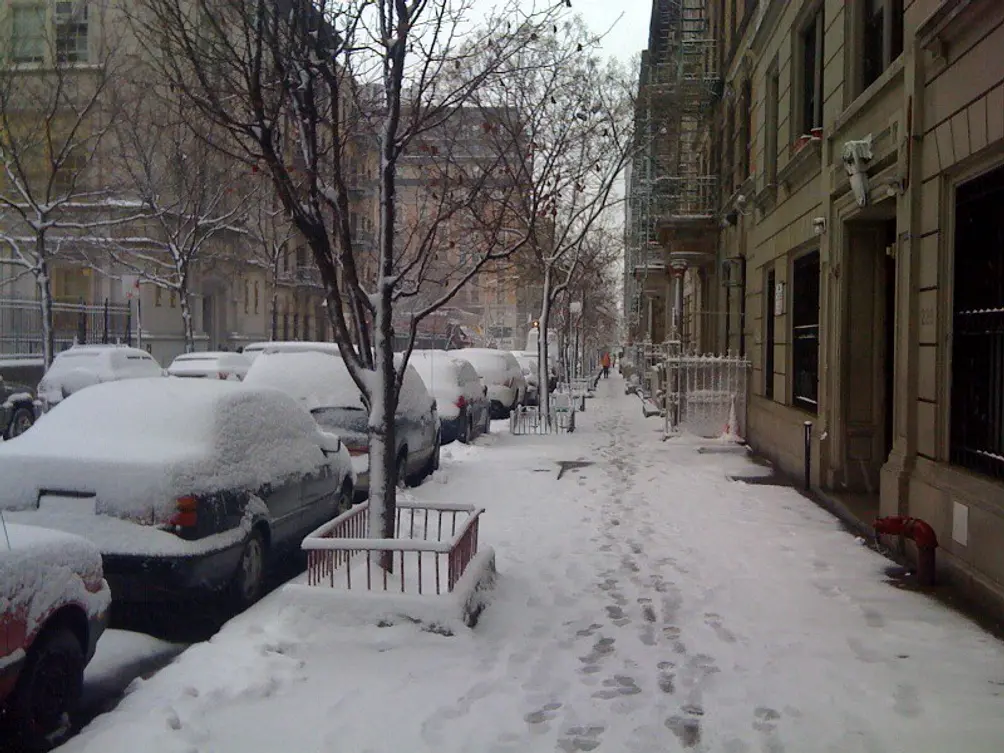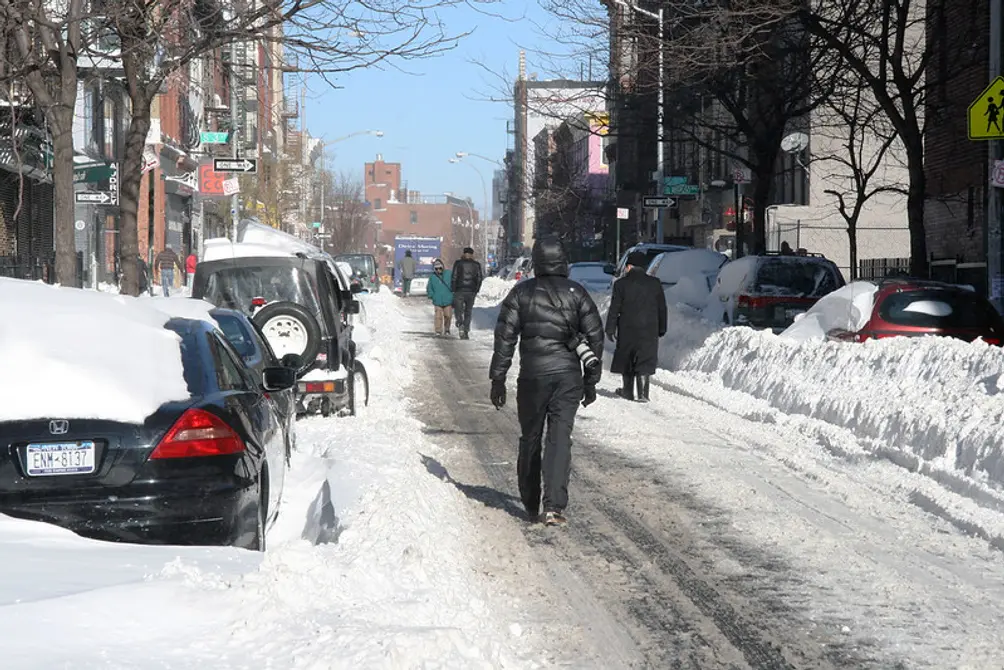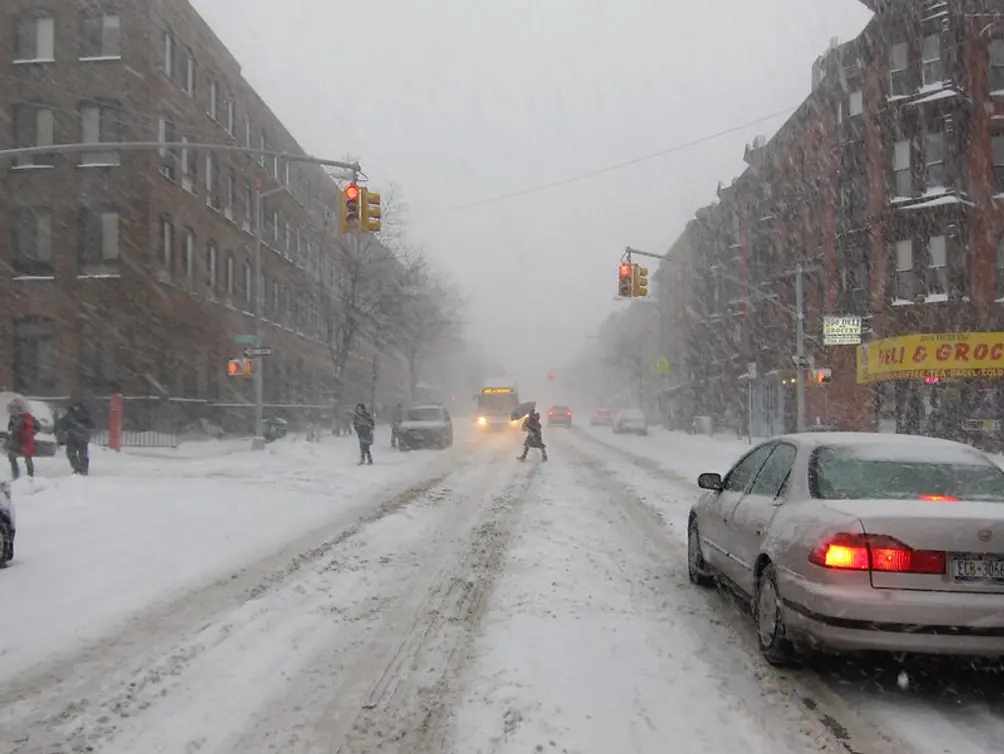Winter is technically only one month in as of this writing, but New York has already avoided the “snow drought” of the past few years: Manhattan saw about two inches of snow on the winter solstice in December 2024, and about 1.6 inches of snow were recorded in Central Park following a recent weekend snowstorm.
According to an Accuweather alert, the most recent storm’s speed created harsh winds and pulled in bitterly cold air that could lead to icy sidewalks and treacherous conditions. Indeed, sidewalks across New York were white on Tuesday morning, but from salt as opposed to snow: According to city law, the owners of commercial buildings, single-family townhouses, and multi-family buildings are responsible for clearing at least a four-foot-wide path on the sidewalk adjacent to their property. This article goes into detail on this and other rules for sidewalk maintenance following a snowstorm.
According to an Accuweather alert, the most recent storm’s speed created harsh winds and pulled in bitterly cold air that could lead to icy sidewalks and treacherous conditions. Indeed, sidewalks across New York were white on Tuesday morning, but from salt as opposed to snow: According to city law, the owners of commercial buildings, single-family townhouses, and multi-family buildings are responsible for clearing at least a four-foot-wide path on the sidewalk adjacent to their property. This article goes into detail on this and other rules for sidewalk maintenance following a snowstorm.
 Snowy sidewalks (Flickr - jkandel)
Snowy sidewalks (Flickr - jkandel)
Who Is Responsible for Clearing Snow and Ice from Sidewalks?
While many other cities take care of snow removal (leaving residents to only clear their personal walkways and steps), in New York City, owners are responsible for clearing all snow and ice from the sideways adjacent to their buildings. Additionally, property owners who are adjacent to corner crossings, fire hydrants, and bus stops (but not bus shelters) are responsible for keeping those spaces clear, too (h/t W42ST).In most walk-ups, snow removal is the superintendent’s responsibility. In larger full-service buildings, snow removal is the responsibility of the superintendent or another building staff member. Because the onus falls on building owners, residents are not responsible for clearing their sidewalks unless they have agreed to do so on the owner’s or management company’s behalf (e.g., in exchange for reduced rent).
What is the Timeframe for Snow Removal?
Whoever is responsible for getting outside with their shovel or snowblower, there is no time to procrastinate. If there is a snowfall or a weather event that leads to icy sidewalks, building owners and their designated employees have a narrow window in which to clear the sidewalks. Department of Sanitation guidelines clearly state:- If the snow stops falling between 7:00 a.m. and 4:59 p.m., you must clear within four hours.
- If the snow stops falling between 5:00 p.m. and 8:59 p.m., you must clear within fourteen hours.
- If the snow stops falling between 9:00 p.m. and 6:59 a.m., you must clear by 11:00 a.m. the next day.
 Don't let this happen to you! (Flick - Ted Ullrich)
Don't let this happen to you! (Flick - Ted Ullrich)
Where Should the Snow Go, If Not on the Sidewalk?
While it may be tempting to simply push all the snow on sidewalks onto the street, this is discouraged. Not only will this make it difficult for neighbors to move their vehicles, especially once the snow starts to ice up, but it may also potentially block the adjacent street, creating an obstacle for emergency responders. The city also kindly asks that residents avoid covering up fire hydrants and crosswalks and “try to clear a path at least four feet wide along the sidewalk,” though depending on the size of the snowfall, this may be difficult to achieve.If you have ever lived through a New York City winter, you’ll appreciate that while a bit of snow may be annoying, the puddles that accumulate on nearly every corner shortly after a snowfall are often a much greater hazard. For this reason, the city also kindly asks corner property owners to clear all pedestrian ramps and to “disperse the water away from the crosswalk” (the city doesn’t offer guidelines on how to disperse the water).
On a related note, the Department of Sanitation also urges local residents to do their part in keeping catch basins clear. As stated, “While there is no specific requirement to clear snow around catch basins, they provide drainage when snow and ice begin to melt. Clearing the catch basins, and placing a channel towards the catch basin, will help prevent flooding when snow and ice begin to melt.”
 (Flickr - Scott Lynch)
(Flickr - Scott Lynch)
What Are the Consequences for Ignoring Guidelines?
If you fail to comply, expect to pay. Homeowners, property managers, and local businesses that fail to remove snow and ice within the clearly stated timelines set out by the city face $100 to $150 fines for first offenses, $150 to $350 for second offenses, and $250 to $350 for third and subsequent offenses.Can You Snitch on Neighbors Who Fail to Clear their Sidewalks?
As with all other local concerns, all you have to do is call 311 or file a complaint online at www.nyc.gov/311. Before you file your complaint, be certain to confirm that the snow or ice is on a public sidewalk (the rules don’t pertain to private walkways) and that the complaint is happening after the timeframe provided to clear walkways.
Contributing Writer
Cait Etherington
Cait Etherington has over twenty years of experience working as a journalist and communications consultant. Her articles and reviews have been published in newspapers and magazines across the United States and internationally. An experienced financial writer, Cait is committed to exposing the human side of stories about contemporary business, banking and workplace relations. She also enjoys writing about trends, lifestyles and real estate in New York City where she lives with her family in a cozy apartment on the twentieth floor of a Manhattan high rise.

 6sqft delivers the latest on real estate, architecture, and design, straight from New York City.
6sqft delivers the latest on real estate, architecture, and design, straight from New York City.
